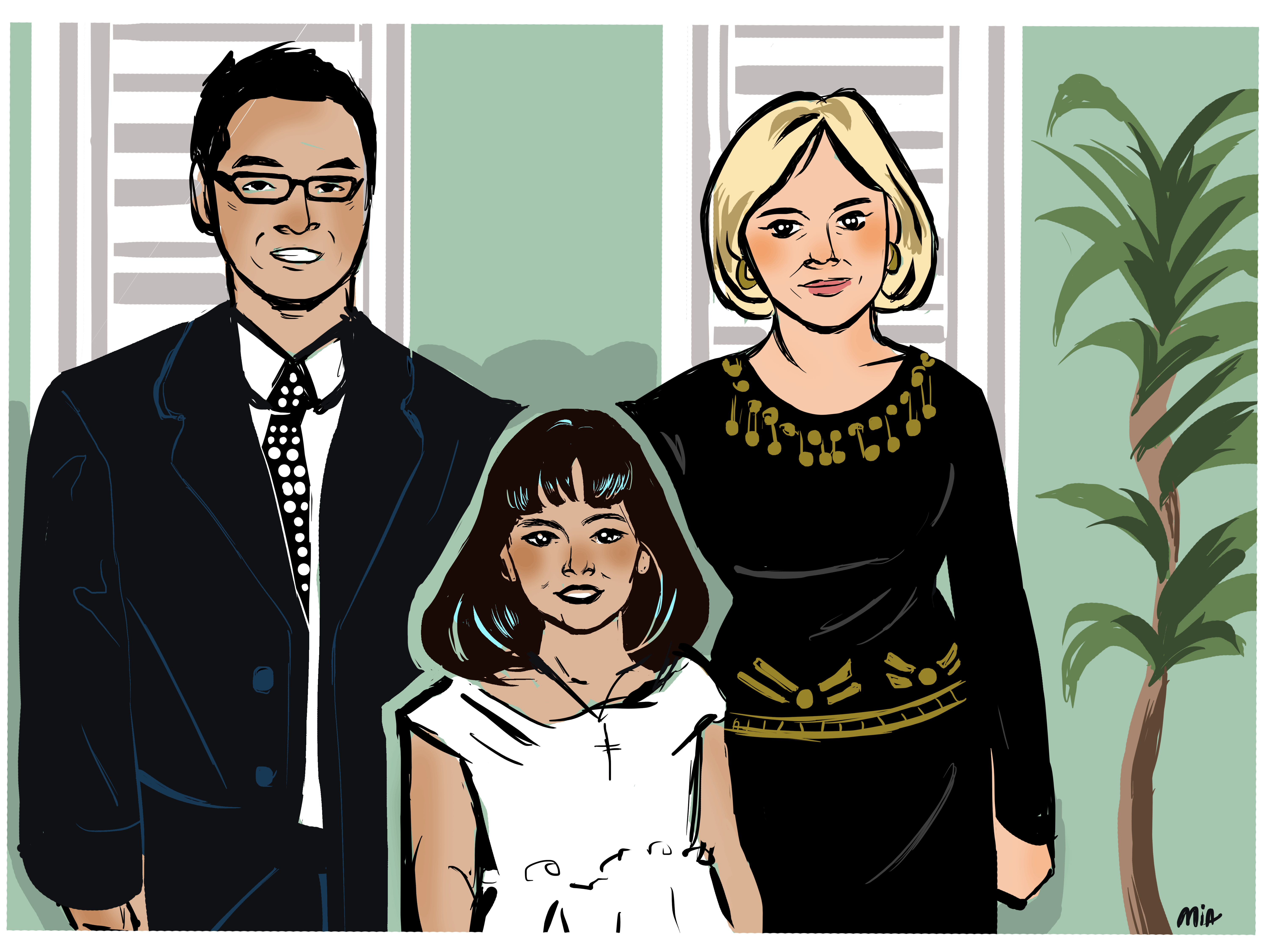Intersections is a new Features subsection exploring multiculturalism and diaspora in Toronto. Students consider how their cultural backgrounds have influenced their experiences, perspectives, and stories.
If I had an Instagram follower for every time someone told me my mixed-race heritage was “exotic,” well, let’s just say I’d give Kim K a run for her money.
Comments like these always confused me; it never struck me as weird growing up in a biracial household. My father is Korean, and my mother is Croatian. While definitely an uncommon combination, it was normal for me to start the week off eating bibimbap and finish the week eating ćevapčići. However, I’ve never been able to escape the curiosity about my mixed heritage. What seemed like normal to me was a foreign concept to many.
Up until entering U of T, the reservoir of snide comments that had accumulated throughout my life convinced me that my family deviated from the norm of single-race ‘purity.’ But before I explain how U of T changed that perception, we need to recount a bit of history first.
A Chu family history
My dad grew up in Busan, South Korea. He immigrated to Canada when he was in elementary school, and his family settled in Etobicoke. Like a lot of immigrants in the 1970s, he grew up relatively poor, he didn’t speak a lot of English, and as the first-born son, he was under a lot of pressure to become a successful professional.
By contrast, my mother was born in Timmins, Ontario, the perfect example of a tiny northern Ontario town. Despite being born in Canada, she grew up in an extremely Croatian household in a town where there was a strong Croatian community. She and her parents eventually moved down to Oakville and lived a relatively comfortable life.
Despite their vastly different upbringings, both of my parents ended up at U of T for their undergrads. My dad studied Commerce at Vic, and my mom studied History at Trin. Not only are my parents a great example of interracial dating, they are a great example of intercollegiate dating as well. Eventually, they met while working at RBC in Toronto — and the rest is history.
I credit the city of Toronto for bringing two people with wildly different cultures and backgrounds together, and for that I will always be grateful. I often think about the circumstances necessary for my existence. If my dad had chosen to immigrate to the US instead of Canada, if my mom never moved down south, or if their parents were stricter about who they wanted them to marry, I might never have been born. But I shouldn’t sweat the details, regardless of the circumstances.
I arrived as a mixed-race kid in a world that had a lot of trouble reconciling that with an overwhelming presence of single-race relationships. It is probably for this reason that my identity was in flux for many years.
Half and half
One of the most relatable songs I’ve ever heard is Miguel’s “What’s Normal Anyway?” Miguel, of mixed Black and Latino heritage, describes the feeling so many mixed kids feel daily when he sings, “I never feel like I belong, I wanna feel like I belong.” Many mixed kids feel the tension between their multiple ethnic identities and often feel pressure to identify with one side more to solidify their identity — it often seems much easier to wear one name tag instead of two. There is never a normal for us, only a constant changing of identity to ‘fit in.’
After reflecting on my biracial-ness, I find it interesting that for the vast majority of my life, I was defined by the half of me that was most foreign to the people I was hanging out with. In elementary school, since I was one of the few ethnic kids in a predominately white school, I was known to others as the ‘Asian’ kid. In high school, I searched for a group of friends that wouldn’t tokenize me for my ‘exoticness,’ and so I hung out with a group that was largely Asian. I ran into other issues here because I was considered pretty white, since I couldn’t speak Korean and couldn’t relate to a lot of their cultural traditions.
So, how did U of T help me embrace my mixed identity?
I know people like to complain about this place every chance they get, but truthfully, I have never felt more comfortable with my identity than in my two years here. Sure, maybe you can attribute this to a boost of self-confidence after those crippling, insecure teen years, but I believe that it’s the diversity of the U of T student body that has allowed me to feel the most confident in my skin I’ve ever felt.
There is something particularly unique about our school environment. I have met people from all over the world who speak multitudes of languages, practice different religions, and teach me new things every day. Perhaps it’s the demographics of the GTA, but I think it speaks to the inclusivity of the institution that such a diverse group of students want to attend this school.
Most importantly, I’ve met so many other mixed kids who can relate to everything I’ve just described. Unlike high school, the lack of cliques means your relationships aren’t defined by labels. People are more interested in what I’m studying or what I’m passionate about than my heritage or hometown. I feel like here, we care more about what people are than what people should be.
Of course, the ‘exotic’ comments will never truly stop, but it’s incredibly heartening to say that over the past two years, more people have told me my mixed ethnicity is ‘cool’ than ever before.


